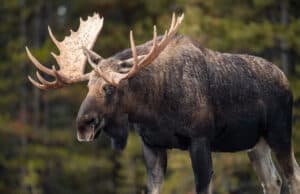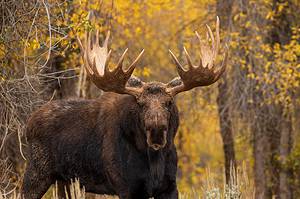Continue reading for our analysis...
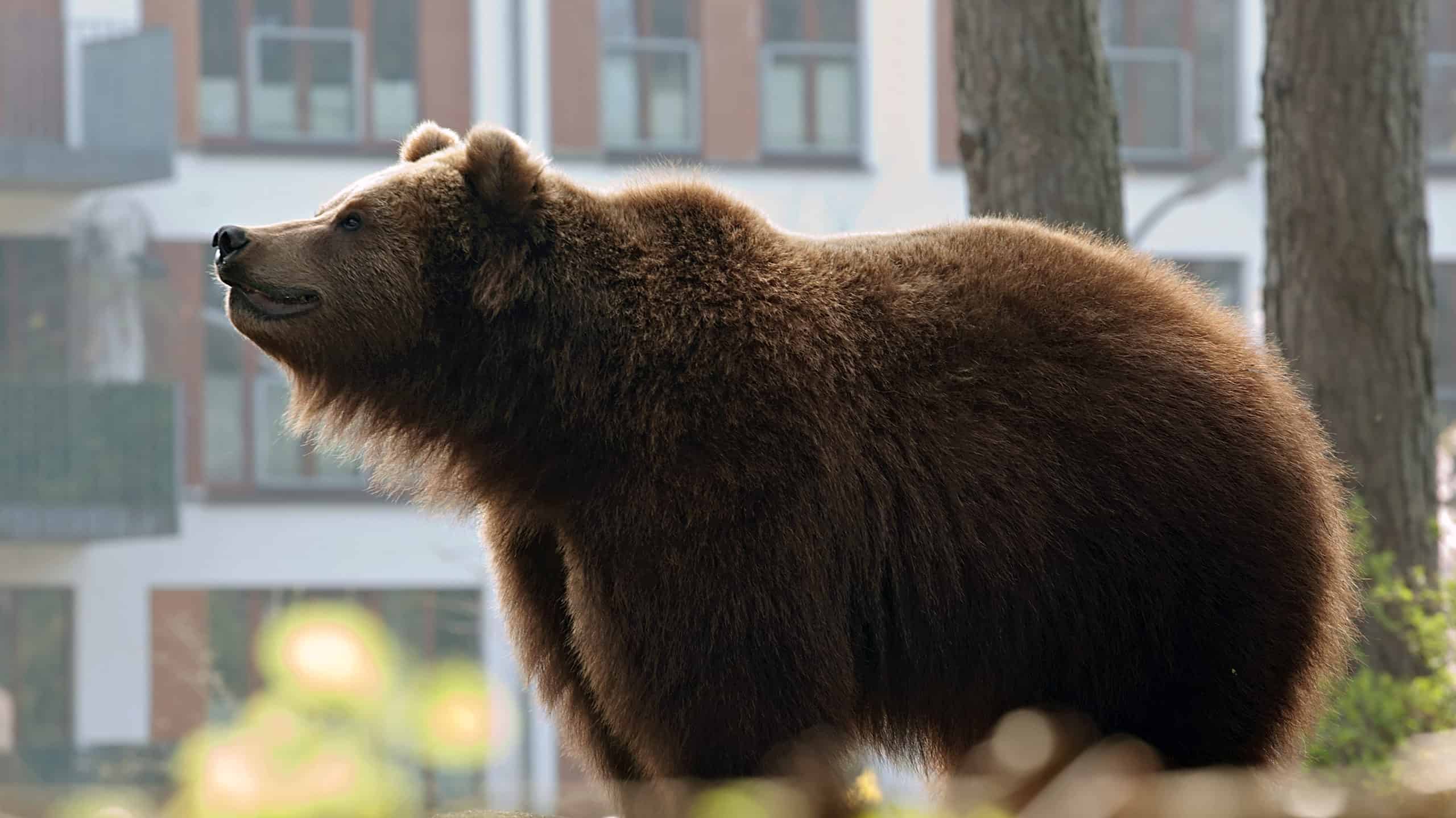
This extraordinary footage was captured at the Glacier National Park close to the Many Glacier Hotel in Montana’s Rocky Mountains. We learn from the video notes that we are looking at a mother moose who had already lost one of her calves to a grizzly bear. The bear had been stalking this moose family for days and was obviously hopeful that they were going to get another meal soon. However, Momma Moose has other ideas!
Check out the chase between a grizzly and a female moose in the video below. (And if you’re wondering, we learn from the video notes that this lucky calf remained safe and sound after this adventure!)
Do Grizzly Bears Normally Hunt Moose?
The grizzly bear, a type of brown bear also called the North American Brown Bear, is known for its large size and aggressive behavior. It is an omnivore so it eats plants and animals. Most of their diet is made up of plant material, including berries, grasses, roots, mushrooms, and insects. They are known for their love of fish, especially salmon, and eat animals such as deer, elk, and mice. However, sometimes they need a substantial meal, and a moose provides that.
However, a fully grown moose can pose a challenge to a fully grown grizzly. Grizzly bears can on average grow to 5 feet tall at the shoulder (8 feet tall when standing), with males weighing 500-900 pounds. Adult moose are much bigger than that, reaching 6 feet tall at the shoulder and weighing 1,200-1,600 pounds. Moose calves, on the other hand, are only about 2-3 feet tall at the shoulder, making them an easier target for grizzlies.
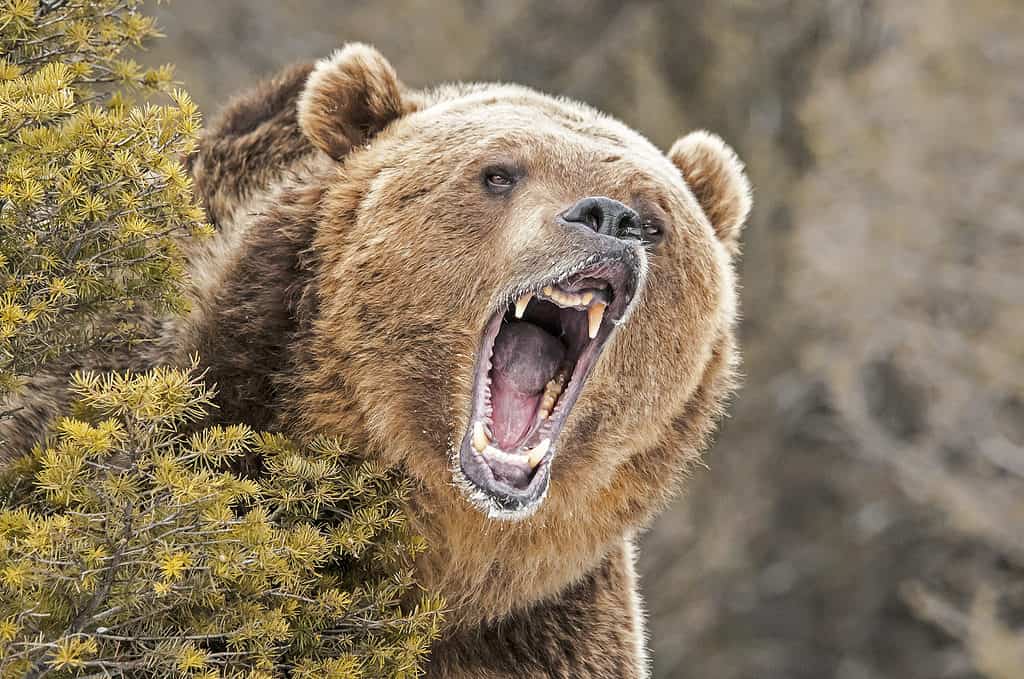
Grizzlies might struggle to overcome a mature moose but they can capture a calf more easily.
©Scott E Read/Shutterstock.com
Moose or caribou calves made up more than half of the meals eaten by a group of grizzly bears studied by researchers in Alaska via GPS trackers over three years. They reported in 2017 that this was a much higher than average kill rate than previously thought. In particular, grizzlies can prey upon moose calves who are very young (from birth to about two months of age), as determined by other research conducted in the boreal forest of northern Canada and interior Alaska.
As grizzlies would generally struggle to overcome a fit, adult moose, they hunt their young as they are able to capture them more easily. That is, of course, provided they can get past the mother.
This Grizzly Hunt Does Not Go According to Plan
In the video, we see this is probably not how the grizzly planned its attack to end, having stalked the moose and her calf for days. We join the scene on the shores of the lake. The footage is captured from a coffee shop overlooking the water. The grizzly bear has spotted the adult moose in the shallow water but the calf is behind a small wooden building and hidden from our view. The bear, however, knows exactly where the calf is!
The bear disappears from view behind the wooden building and suddenly we hear the frantic cries of the moose calf. This immediately attracts the attention of the mother, who comes charging out of the water and to the rescue. She has clearly been successful in driving the grizzly away because the next thing we see is the bear racing down the road (with no calf) and being pursued by the moose.
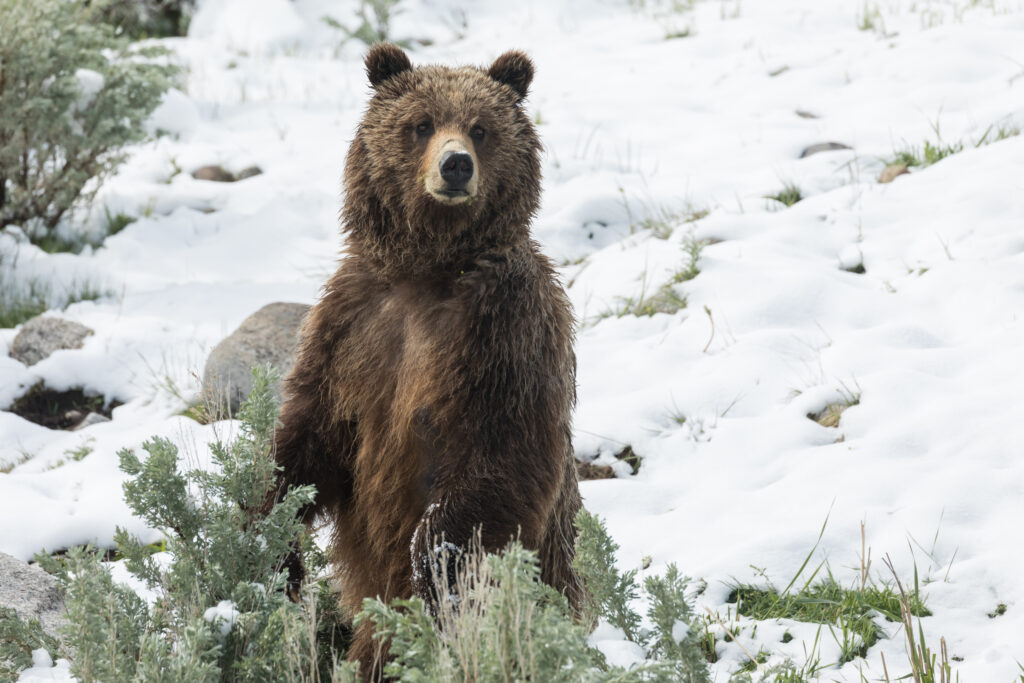
Grizzly bears usually avoid humans.
©Kelp Grizzly Photography/Shutterstock.com
The Chase Is On
This impressive mom towers above the grizzly as she races after the predator. The bear decides to head for the water but then changes its mind and races back across the area where the cameraperson is recording the event.
The bear is completely spooked and desperately trying to get away from the moose, which is probably why it makes a massive error of judgment. The bear crashes into the window of the gift shop/coffee shop and we can clearly hear the smashing glass as well as gasps from the human witnesses.
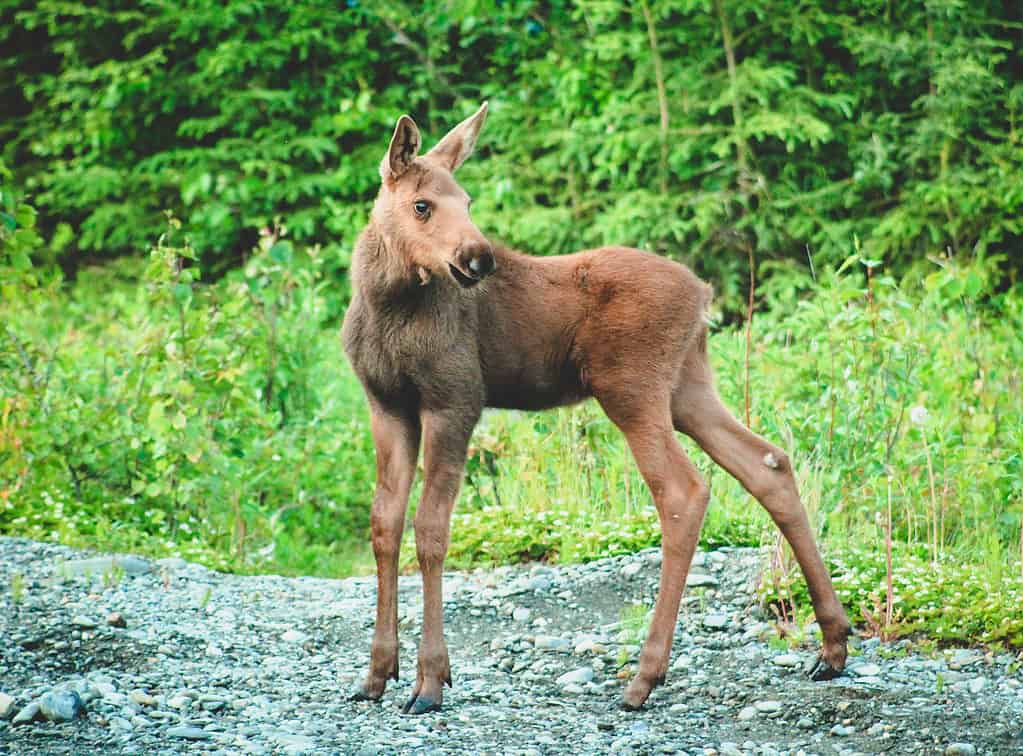
Grizzlies target moose calves because they are easier to catch.
©Amanda Wayne/Shutterstock.com
Human vs Grizzly
Luckily it appears that the grizzly did not try to run after or target any of the people nearby watching this scene unfold. Generally, bear attacks on humans are very rare. From 2000 to 2015, there were 21 fatal grizzly bear attacks and a total of 183 attacks in North America. In Glacier National Park, where this video was filmed, there have been 10 fatal bear encounters since 1967.
A bear doesn’t hunt humans for no reason but will attack if it feels threatened, especially if it is a mother guarding her cubs. Bears in the wild are dangerous as their behavior is unpredictable.
So what could happen if an unarmed human needed to go up against a grizzly like this? We outline in detail what might occur in such a matchup here. Grizzly bears are able to throw a person the length of a football field and, with a bite force of 975 PSI, they can split a human in half. It’s safe to say that grizzly bears have an advantage over humans when it comes to size, speed, defenses, and offensive abilities. While there’s a very slim chance someone could come out alive after a battle with a bear, like these two Wyoming college wrestlers who survived a grizzly attack in 2022 with horrific injuries, the end result is much more likely to be death.
If you’re going to bear country you should prepare by checking the area’s latest safety information, go hiking in groups if possible, bring bear spray, and learn what to do if you see a bear. The National Park Service advises in an encounter with a bear to talk in a low, calm voice so it recognizes you are a human and not a prey animal, stand your ground, and not make sudden movements but slowly wave your arms above your head and tell the bear to back off. If a grizzly attacks, do not run or climb a tree but instead play dead, lying flat on your stomach and hope the bear loses interest or believes you pose no threat.
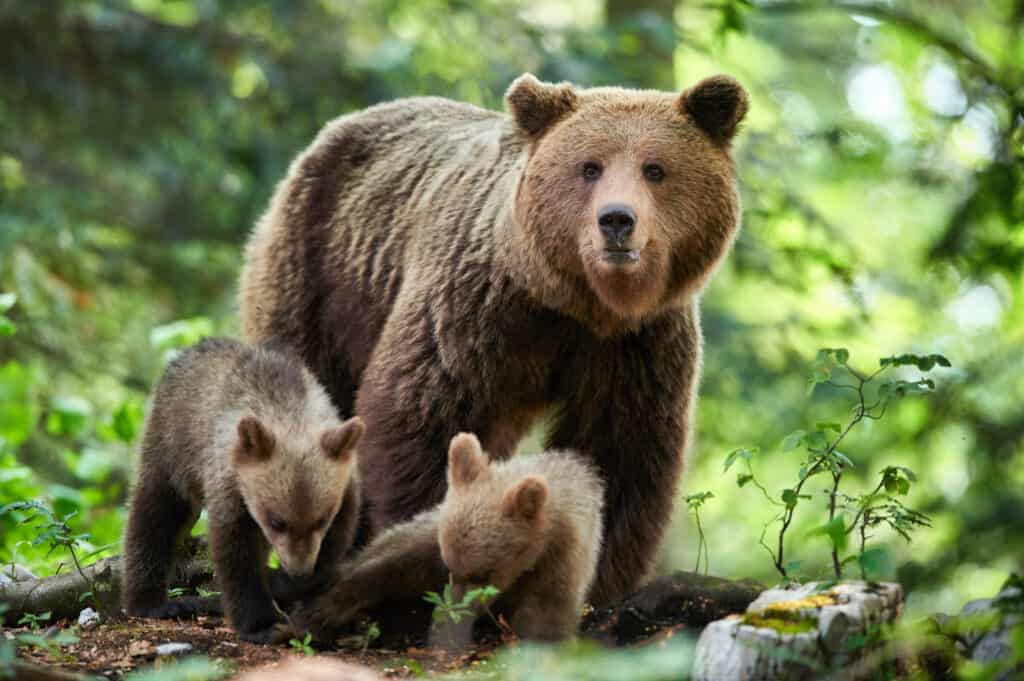
A female grizzly will attack if she feels her cubs are under threat.
©Piotr Krzeslak/Shutterstock.com
Where Do Grizzly Bears Live?
In the United States, you can find grizzly bears in 5 states: Alaska, Idaho, Montana, Washington, and Wyoming. There are about 55,000 grizzlies in North America and they are also in Canada, where it’s estimated the grizzly population is 21,000.
Alaska is home to 30,000 grizzlies and is the only state in the U.S. where all three species of North American bears are found.
The battle between the grizzly and the moose in the video takes place in Glacier National Park in Montana. Grizzlies can be found anywhere within the park, including its alpine meadows, forests, and lakeside habitats, as well as near hiking trails. Many Glacier Valley is the most densely populated grizzly region of Glacier National Park, with its river valleys, lakes, and waterfalls providing rich food sources. Discover other parts of the national park where grizzlies can be seen here.
Native to North America, grizzly bears were once widespread across most of the western range of the U.S. but were hunted almost to extinction and suffered habitat loss. The California grizzly bear has been extinct since the 1920s. The grizzly bear has been protected in the U.S. under the Endangered Species Act since 1975.

Alaska is home to nearly 30,000 grizzly bears.
©Kelp Grizzly Photography/Shutterstock.com
How Long Do Grizzlies Live?
Conservationists say that the grizzly population in the U.S. has regular breeding rates and is currently thriving.
A grizzly bear can live 20-25 years on average in the wild, and some have been recorded as surviving 35 years. In captivity, these bears are able to live for more than 40 years.
Grizzlies remain healthy over these long lifespans by ensuring they have sufficient food sources, even if they have to work hard for a meal sometimes as we saw here!
Thank you for reading! Have some feedback for us? Contact the AZ Animals editorial team.



